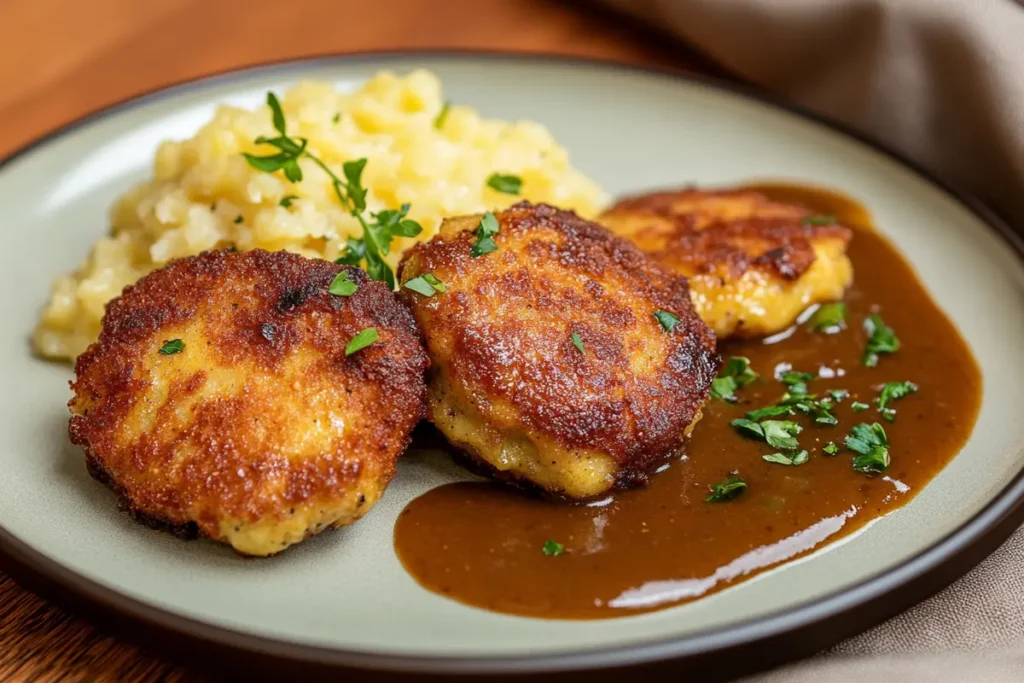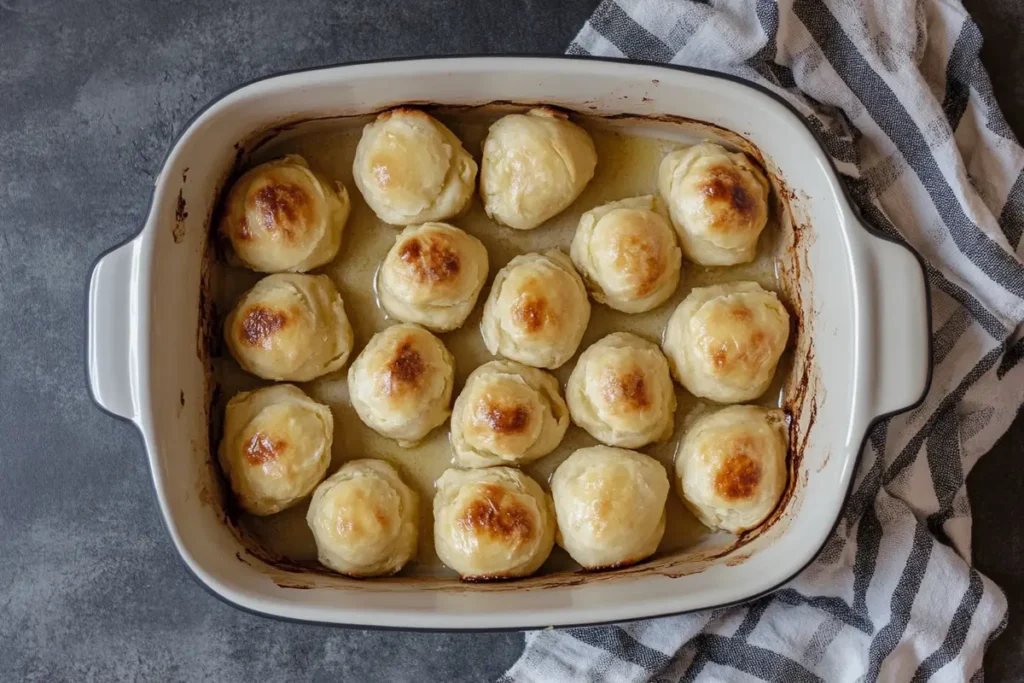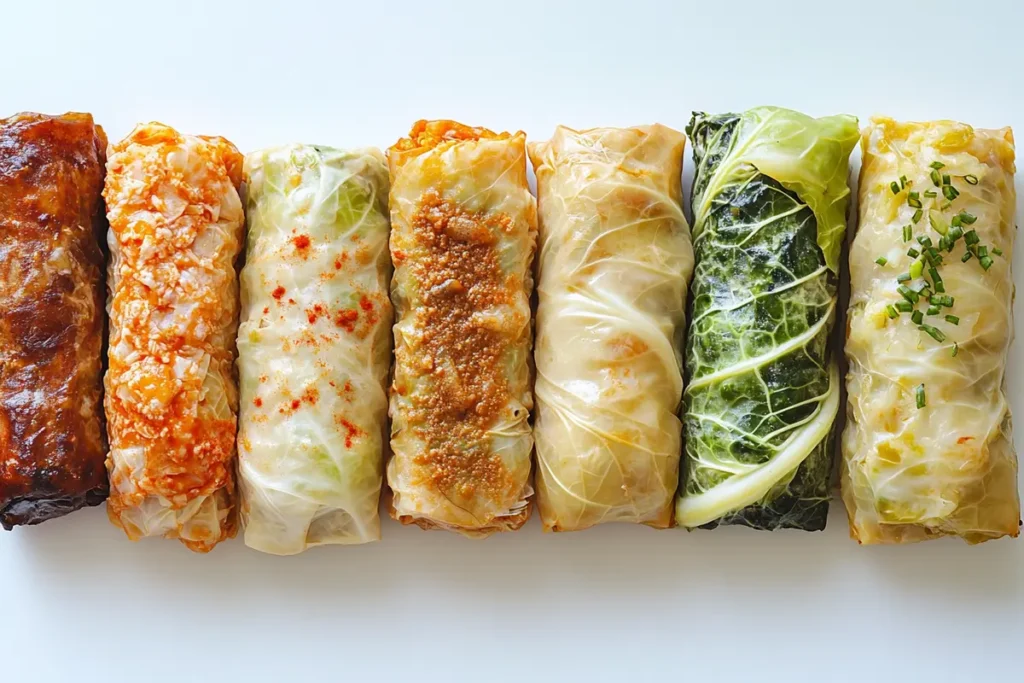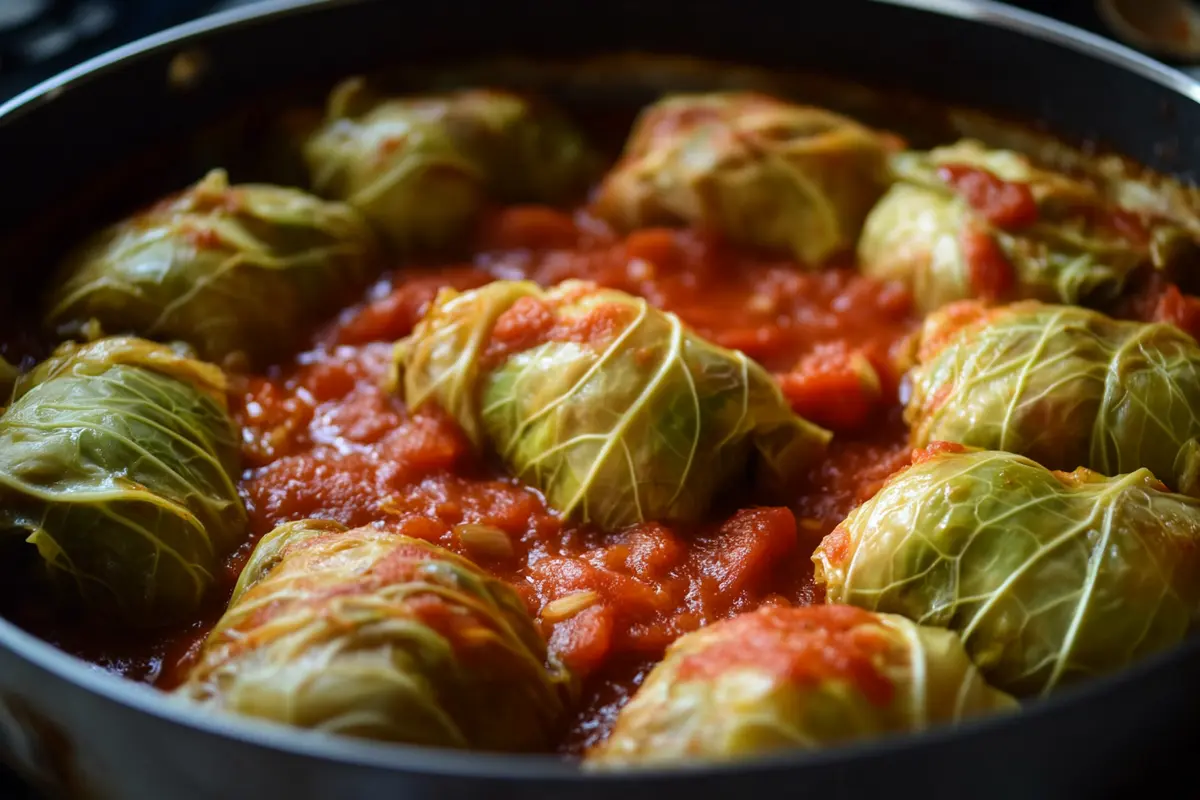Are cabbage rolls German or Polish? This question often arises among food enthusiasts who explore the diverse world of Eastern European cuisine. Many people have tasted cabbage rolls at family gatherings or cultural festivals. Yet they may not know exactly where this cherished dish began. In this article, we will delve into the history, traditions, and variations of cabbage rolls. We will also compare German and Polish influences to help clarify the origins of this comforting dish.
In addition, we will examine cultural nuances that shaped how cabbage rolls are prepared. To gain insights on global food history, you can check the Smithsonian Magazine’s Food Section for intriguing historical tidbits. For more general information about various European cuisines, you might find The Spruce Eats helpful. They provide extensive tips and recipes. Furthermore, if you’re curious about the broader culinary context of Eastern European dishes, Atlas Obscura’s food category can offer interesting background stories from around the globe.
A Brief History of Cabbage Rolls
Cabbage rolls have existed in Eastern Europe for centuries. Some historians claim that versions of stuffed cabbage first appeared during the era of the Ottoman Empire. Others suggest that Middle Eastern influences introduced spiced meats and vegetables rolled inside leafy greens. Over time, these practices likely migrated northward.
However, each country or region added its personal spin. In Germany, cooks used local spices and often added diced onions, breadcrumbs, or other filling enhancers. In Poland, people introduced rice, mushrooms, or barley to create unique textures. Therefore, the dish evolved in parallel ways across different cultural contexts.
In addition, local climates and resources influenced cabbage roll recipes. Regions with harsh winters valued robust meals that used available produce. Cabbage thrived in cooler climates. Thus, it became a staple ingredient that people could preserve and enjoy in hearty recipes. Consequently, stuffed cabbage gained popularity in many communities looking for comforting, nutritious food.
German Kohlrouladen: A Closer Look

One variation that fuels the debate over are cabbage rolls German or Polish? is Kohlrouladen. In German-speaking areas, this dish typically involves boiled cabbage leaves stuffed with ground beef or pork. Some cooks add a mixture of onions, spices, or even bacon to enhance flavor. The rolls are then simmered or baked in a savory sauce.
Common Features of German Kohlrouladen:
- Ground pork or a pork-beef blend
- Braised or pan-fried in a meat-based sauce
- Often served with potatoes or dumplings on the side
- Carrots, onions, or celery might be added for extra depth
Some families pass down Kohlrouladen recipes from generation to generation. The process usually begins by blanching the cabbage leaves to make them flexible. Then, the filling is placed in the center, and the leaves are rolled and secured. The entire dish is cooked slowly to allow flavors to meld. Therefore, Kohlrouladen becomes tender and comforting.
In parts of Germany, bread crumbs or even soaked bread might be mixed into the filling. This step can make the texture lighter and more cohesive. Meanwhile, certain cooks rely on bacon fat or smoked meats for added richness. Because Germany boasts various regional cuisines, there is no single way to make Kohlrouladen. Each family or region adapts it to their preferences.
Polish Gołąbki: A Beloved Tradition

On the Polish side, we encounter gołąbki, a dish often served at holiday gatherings or family dinners. The name comes from the word for “pigeon,” though the dish itself contains no pigeon meat. Instead, it refers to the shape or “little pigeons” created by rolling cabbage leaves around a filling. Gołąbki includes ground meats (pork, beef, or poultry), along with rice and vegetables.
Key Aspects of Polish Gołąbki:
- Typically stuffed with rice or barley mixed into the meat
- Simmered or baked in a tomato-based sauce or broth
- Sometimes flavored with mushrooms for extra earthiness
- Served with mashed potatoes, rye bread, or sour cream
Preparation involves blanching or freezing cabbage to soften leaves. Freezing helps by breaking down the leaf structure without parboiling. Once the leaves are pliable, they are filled with a seasoned meat-rice blend. Next, they’re arranged in a pot, layered with sauce or broth, and simmered gently. This method ensures the rolls remain moist and tender.
In Polish cuisine, gołąbki often appears alongside other comfort foods, like pierogi or bigos. Generations of cooks have refined their techniques to achieve the best texture. Some add eggs to bind the filling. Others rely on the natural starch from rice. The hallmark of Polish gołąbki is a slightly tangy, tomato-forward sauce that contrasts well with the savory filling.
Comparing Ingredients and Seasonings
When tackling are cabbage rolls German or Polish? it helps to compare ingredients. Both styles use cabbage leaves as wrappers, but the fillings vary. German Kohlrouladen frequently leans toward a meaty, onion-heavy mixture with minimal grains. Polish gołąbki often includes rice or other grains, lending a softer bite inside the roll.
German Kohlrouladen
- Meat-centric filling
- Pan gravy or brown sauce
- Possibly includes bread crumbs
- Strong onion or bacon presence
Polish Gołąbki
- Rice or barley mixed with ground meat
- Tomato-based sauce (often sweet-sour)
- Might include mushrooms
- Commonly topped with fresh dill or parsley
Despite differences, these dishes share many similarities. Both rely on cabbage leaves for structure. Both also reflect their country’s staple ingredients. Whether you prefer the German or Polish route, you will find hearty textures and nostalgic comfort.
Cultural Significance and Family Traditions
Food often symbolizes more than mere sustenance. As families gather for special events, they pass recipes down. In many German and Polish homes, making cabbage rolls involves grandparents teaching younger generations. This process creates cherished memories in the kitchen.
Moreover, are cabbage rolls German or Polish? is not just about geography. It’s about cultural pride. German families delight in Kohlrouladen as a symbol of their heritage. Polish families see gołąbki as a comforting reminder of Sunday lunches at grandmother’s house. These dishes carry emotional weight far beyond their ingredients.
Additionally, diaspora communities worldwide maintain traditions. Polish-Americans or German-Americans might adapt recipes based on local ingredients. Yet they retain the essence of these age-old customs. This keeps the cultural identity alive and fosters connection among relatives, no matter where they live.
Regional Variations Beyond Germany and Polan
Although the main question is are cabbage rolls German or Polish? you’ll find similar dishes across Central and Eastern Europe. Hungary has töltött káposzta, typically stewed in sauerkraut. Ukraine boasts holubtsi, featuring buckwheat or millet in the filling. Russia’s version, golubtsy, also uses a tomato-based sauce.
In Romania, sarmale is quite popular. This version frequently uses sour cabbage leaves for a tangy twist. Also, some Balkan nations enjoy sarma, which is a close cousin of the Romanian recipe. All these variations show how stuffed cabbage transcends borders.
Hence, the concept of rolling savory fillings in cabbage leaves is universal. Each country modifies it based on local tastes and resources. This global perspective can enrich your appreciation for cabbage rolls. The dish is an essential comfort food that unites many cultures under one culinary technique.
Healthful Aspects of Cabbage Rolls
Cabbage rolls are not only comforting; they can also be quite nutritious. Cabbage contains vitamins C and K, along with fiber. Ground meats supply protein, while rice or grains contribute complex carbohydrates. However, you can alter recipes to suit specific dietary needs.
- Use lean meats (chicken or turkey) instead of fatty cuts.
- Replace white rice with brown rice or quinoa for extra fiber.
- Increase vegetable content by adding diced peppers or carrots to the filling.
- Limit sodium by using low-salt sauces and seasonings.
In addition, cooking methods matter. Baking or simmering reduces the need for excessive oil or frying. By controlling portion sizes and focusing on leaner ingredients, you can create a balanced meal. Yet, the essence of cabbage rolls remains, delivering warmth and tradition.
Modern Twists on a Classic

Today, many people put modern spins on old-fashioned dishes like gołąbki or Kohlrouladen. For example, some prefer vegetarian fillings using lentils, mushrooms, or plant-based crumbles. Others incorporate global flavors, such as chili, paprika, or curry powder.
Yet the core identity remains. Even if you update your fillings, you’re still creating a rolled cabbage dish that evokes comfort. Adding smoked paprika or chili peppers might produce a spicier version. Stuffing them with tofu or chickpeas can create a vegan alternative. These twists highlight how adaptable cabbage rolls can be.
Additionally, you can experiment with sauces. Instead of the classic tomato or brown sauce, try a creamy dill sauce. Alternatively, stir in roasted garlic to add complexity. You could even garnish with fresh herbs or a swirl of yogurt for a tangy finish. Regardless of the adaptation, the dish’s heart remains intact.
Preparation Tips and Techniques
If you want to try making your own cabbage rolls, consider these tips:
- Soften Leaves: Freeze your cabbage head overnight or blanch the leaves in boiling water. This prevents tearing.
- Prepare Filling in Advance: Cook rice or barley beforehand, then mix with seasoned meat.
- Secure Rolls: Tuck the leaf ends or use toothpicks to keep them together.
- Layer Carefully: Place cabbage leaves or leftover scraps on the pot’s bottom to avoid sticking.
- Slow Cook: Whether you bake them in the oven or simmer on the stove, low-and-slow ensures tenderness.
Choose a sauce that reflects your preference, such as tomato-based or a simple broth. By following these steps, you set yourself up for success. Cabbage rolls can be time-consuming, but they are well worth the effort.
Where to Enjoy Authentic Cabbage Rolls
If you lack time or prefer to taste these rolls before cooking them yourself, explore local restaurants. German pubs might serve Kohlrouladen with mashed potatoes. Polish eateries often feature gołąbki with dill-laced sauces. Visiting these establishments can give you a clearer idea of the distinct flavors.
Moreover, cultural festivals or holiday fairs sometimes showcase these dishes. For instance, Oktoberfest celebrations might offer German-style cabbage rolls. Polish festivals often serve gołąbki. Sampling them in these settings is an excellent way to compare. You’ll also soak in the ambiance of traditional music, dancing, and community spirit.
If you have a friend or neighbor with German or Polish ancestry, ask if you can learn from them. Watching someone cook an inherited recipe can teach you more than any cookbook. Plus, you may make new friends while bonding over a shared love of hearty home cooking.
So, Are Cabbage Rolls German or Polish
At this point, you might still wonder: Are cabbage rolls German or Polish? The short answer is that both cultures claim their own versions. Each has unique fillings, sauces, and names. Germans cherish Kohlrouladen, while Poles delight in gołąbki. Both revolve around the comforting process of wrapping savory fillings in softened cabbage leaves.
Because stuffed cabbage exists in various forms throughout Europe, neither Germany nor Poland can claim exclusive ownership. Yet the strong ties each country has to cabbage rolls are undeniable. Generations have prepared and served these dishes with local twists, passing recipes down through centuries. The result is a sense of pride and cultural identity reflected in every bite.
Therefore, your personal preference may hinge on whether you enjoy a brown gravy or a tomato sauce. If you love meaty gravies, the German version could become your favorite. If you prefer a tomato-forward taste, Polish gołąbki might be your top choice. In truth, both traditions offer mouthwatering experiences and a chance to connect with history.
Conclusion
Are cabbage rolls German or Polish? In reality, they are both and so much more. Each country has molded the basic concept to match regional palates. Germany’s Kohlrouladen delivers robust, savory notes, often served with rich gravy. Poland’s gołąbki brings a lighter, tomato-kissed flavor that pairs perfectly with sour cream or fresh dill.
More importantly, both dishes unite families around comforting meals. They also serve as cultural ambassadors, showcasing the resourceful cooking that emerged from Eastern and Central Europe. Whether you call them gołąbki, Kohlrouladen, or just “stuffed cabbage,” the same spirit of warmth and togetherness shines through.
Next time you enjoy a plate of cabbage rolls, reflect on the many hands that shaped these recipes. Consider the journeys of your ancestors or the traditions of your neighbors. Enjoy each bite as an homage to history, culture, and the simple joy of a home-cooked meal.
Frequently Asked Questions
1. Is stuffed cabbage Polish or German?
Stuffed cabbage appears in both cuisines. Poles call it gołąbki, while Germans prepare Kohlrouladen. The dish varies by fillings, sauces, and regional flavors.
2. What is the difference between Polish and Ukrainian cabbage rolls?
Polish cabbage rolls (gołąbki) often use rice and a tomato-based sauce. Ukrainian cabbage rolls (holubtsi) can include buckwheat or millet. They may feature a different sauce profile, sometimes with sour cream or vegetables.
3. Where did gołąbki come from?
Gołąbki emerged in Poland. However, they share similarities with other Eastern European stuffed cabbage recipes. Each region adapts the concept based on local tastes.
4. Where did golubtsi originate?
Golubtsi hails from Russia and Ukraine. It is one of many stuffed cabbage variations found across Central and Eastern Europe.

